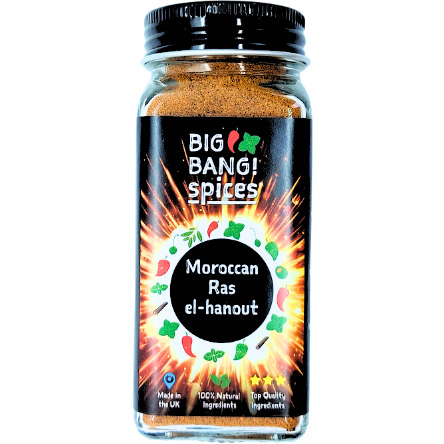
Moroccan cuisine is renowned for its bold flavors and aromatic spices, and at the heart of many of its dishes lies Ras El Hanout. This complex spice blend adds depth and character to a wide array of Moroccan recipes, from tagines to couscous dishes. In this guide, we’ll explore the versatile ways you can incorporate Ras El Hanout into your culinary creations, elevating your dishes to new heights of flavor.
Understanding the Essence of Ras El Hanout
Before delving into its uses, it’s essential to grasp the essence of Ras El Hanout. This blend is a harmonious marriage of various spices, carefully curated to create a symphony of flavors that embody the essence of Moroccan cuisine. Typically including ingredients such as cumin, coriander, cinnamon, ginger, and cloves, Ras El Hanout strikes a perfect balance between sweet, savory, and spicy notes.
Enhancing Savory Dishes
Ras El Hanout is the cornerstone of many savory Moroccan dishes, infusing them with its distinctive flavor profile. Here are some ways you can incorporate Ras El Hanout into your savory creations:
1. Tagines:
- Ras El Hanout is a quintessential ingredient in Moroccan tagines, imparting depth and complexity to slow-cooked stews. Add a tablespoon or two of the spice blend to your tagine base, along with other aromatics like onions, garlic, and tomatoes, for a rich and fragrant dish.
2. Couscous:
- Elevate simple couscous dishes by seasoning them with Ras El Hanout. Toss cooked couscous with a drizzle of olive oil and a generous sprinkling of the spice blend to infuse it with Moroccan flavors. Add chopped dried fruits, nuts, and fresh herbs for a vibrant and satisfying side dish.
3. Grilled Meats:
- Rub Ras El Hanout onto your choice of meat before grilling or roasting to impart a Moroccan twist to your favorite cuts. Whether it’s chicken, lamb, or beef, the spice blend adds depth of flavor and creates a tantalizing crust when cooked.
Adding a Touch of Spice to Sweet Dishes
While Ras El Hanout is primarily associated with savory dishes, its complex flavor profile can also complement certain sweet treats. Here’s how you can incorporate it into your dessert recipes:
1. Spiced Desserts:
- Experiment with Ras El Hanout in your dessert creations, such as spiced cakes, cookies, or fruit compotes. Its warm and aromatic notes can add depth to traditional sweet treats, creating a unique fusion of flavors that will intrigue and delight your taste buds.
2. Honey Glaze:
- Create a flavorful honey glaze by combining honey with a pinch of Ras El Hanout. Brush this glaze onto roasted fruits like figs or peaches for a sophisticated dessert that balances sweetness with subtle spice.
Conclusion
Ras El Hanout is more than just a spice blend; it’s a gateway to the vibrant and diverse world of Moroccan cuisine. By incorporating this versatile ingredient into your cooking, you can transform ordinary dishes into extraordinary culinary masterpieces, infusing them with the rich flavors of North Africa. Whether you’re simmering a fragrant tagine, fluffing up a bowl of couscous, or indulging in a spiced dessert, Ras El Hanout is sure to elevate your dining experience and transport your senses to the bustling souks of Morocco. So, unleash the flavor and embark on a culinary adventure that celebrates the beauty of Moroccan gastronomy.